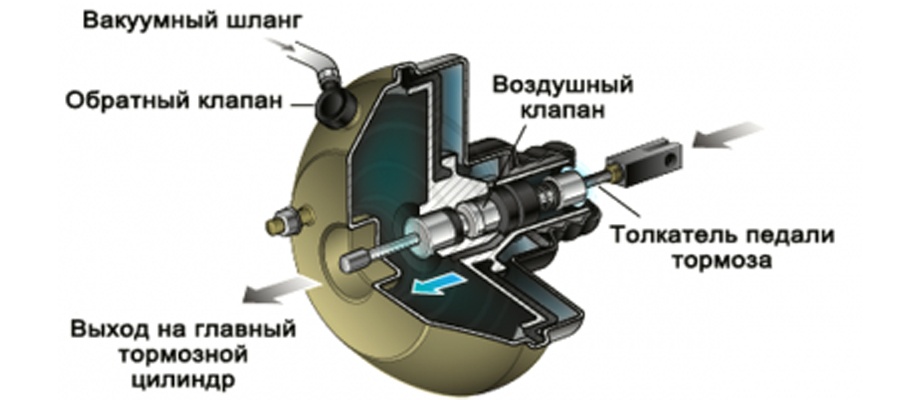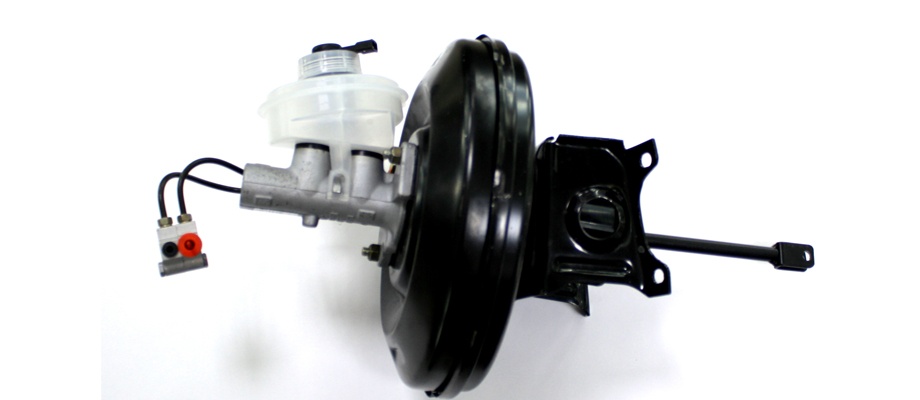
Hard or soft brake pedal. What is the reason and what to do
The braking system is an essential part of any vehicle. Auto designers pay special attention to brakes, realizing that safety on the road and people's lives depend on their impeccable work. The brakes of modern cars are quite reliable, however, it must be remembered that any parts during operation are subjected to mechanical, thermal, chemical and other types of loads, and therefore wear out and may fail. Parts of the brake system are no exception, only in this case the price of a breakdown can be very high.
Certain signs that appear during braking can warn that something is wrong with the brakes - extraneous sounds or strong vibrations, the car pulling to the side, unevenness or a noticeably reduced braking efficiency and an increased braking distance.
But the first thing they usually pay attention to is the behavior of the brake pedal. It can become too tight, so that it has to be pressed with force, or, on the contrary, it can suddenly turn out to be too soft, or even completely fail. All this complicates the implementation of braking and can lead to serious consequences. About what causes such symptoms and how to act in such situations, and we'll talk in more detail.
It happens that a relatively tight brake pedal stroke can be a feature of some models of cars. This nuance needs to be clarified if you have just purchased a car or are testing it before buying.
If everything was fine, but at some point you noticed that the pedal suddenly became “wooden” and you have to put pressure on it with considerable effort, then most likely the malfunction is related to the vacuum brake booster. It is this device that is designed to reduce the physical effort required for braking.
The ease of pressing the pedal occurs due to the difference in pressure in the atmospheric and vacuum chambers of the amplifier. Between the chambers there is a diaphragm with a rod that pushes the piston of the main brake cylinder (MBC), which, in turn, pumps into the system lines and further to. The vacuum in the vacuum chamber is created by an electric pump, and in gasoline internal combustion engines the source of vacuum is often the intake manifold.
In the initial state, the cameras are connected to each other. When the pedal is pressed, the vacuum chamber is connected to the vacuum source through the check valve, and the atmospheric chamber is connected to the atmosphere through the air valve. As a result, the diaphragm with the rod is drawn into the vacuum chamber. Thus, the force required to press on the GTZ piston is reduced. The vacuum amplifier can be made as a separate element or form a single module with the GTZ.
The most vulnerable element here is the rubber hose connecting the intake manifold to the vacuum chamber. Therefore, first of all, its integrity should be diagnosed and, if necessary, replaced.
Violation of tightness may be accompanied by non-standard behavior of the internal combustion engine during braking - tripling, increasing or decreasing speed. It happens that fuel consumption increases. This is due to the suction of air through a damaged hose and the entry of a lean mixture into the internal combustion engine cylinders.
If the vacuum creates a vacuum pump, you need to diagnose its serviceability.
In the vacuum booster itself, the air filter may become clogged, the diaphragm may be damaged, or one of the valves may lose its mobility.
If necessary, you can purchase a new one or try to repair the existing one. Be careful when disassembling - there is a spring inside, as well as a number of parts that are easy to lose. It must be borne in mind that when reassembling after repair it is not always possible to sufficiently ensure tightness, and therefore normal operation of the device.
When replacing the vacuum booster, it is not required to disassemble the GTZ, and therefore, there is no need to bleed the brake system.
Brakes can also become hard due to defects in the cuffs in the GTZ or working cylinders and, as a result, a tighter stroke of the pistons in them. Treatment is the replacement of damaged parts or the cylinders themselves.
The first step is to conduct a visual check. Make sure that there are no brake fluid leaks and that the booster housing is not defective. diagnose the integrity of the hoses and the tightness of their connection to the fittings. Tighten the clamps if necessary.
A hiss that occurs when the brake pedal is pressed may indicate a leak. Such a hiss often persists for some time after the engine is turned off, and then it can be heard quite distinctly.
There is a set of ways to diagnose the performance of a vacuum amplifier.
The ICE must be stopped. Press the brake pedal 6-7 times in a row to equalize the pressure in the booster chambers, and then depress the brake all the way and start the engine in this position. If the amplifier is working, a vacuum will appear in the system. Due to the pressure of the membrane, the stem will move, pulling the pusher along with it. And since the pusher is mechanically connected to the pedal, it will drop slightly, and you can easily feel it with your foot. If this does not happen, then there is no vacuum in the system. If in doubt, try the second method.
Turn on the engine, let it idle for a set of minutes, then turn it off. Fully depress the brake two or three times and release the pedal. If the vacuum booster is working properly and there is no air suction, then the first one or two presses will be soft, and the subsequent ones will be noticeably tighter. If you do not notice any difference in the course of the pedal, then there are problems with the amplifier.
With the engine running, depress the brake pedal and, while holding it down, turn off the engine. If you now remove your foot from the pedal, it should remain in the lowered state for some time, thanks to the remaining vacuum in the vacuum chamber of the amplifier.
If pressing the pedal has become too soft, then there are air bubbles in the hydraulics and then the system should be bled, or there is a loss of working fluid. The first step is to check the brake fluid level. If it is below the permissible level, the hydraulic system must be carefully diagnosed for leakage. Violation of tightness is possible at the junction of tubes with fittings due to poorly clamped clamps, and the hoses themselves may be damaged. The working fluid can also be lost in the wheel brake cylinders if the seals are damaged. After the leak has been repaired, it will also be necessary to bleed the hydraulics of the brake system to remove air from it.
If the brake fluid is of poor quality, contaminated or has not been changed for a long time and has lost its properties, then heating during sudden braking is quite capable of causing it to boil, and then the brakes will become “cotton-wool”, and the car itself will be poorly controlled. An old, dirty, or non-compliant TJ can cause brake cylinder seizure, seal failure, and other problems. The conclusion is obvious - pay attention to the condition of the brake fluid and change it in a timely manner.
Another reason for the softness of the brake pedal is the hoses, which are made of rubber and wear out over time, becoming loose. When hydraulic pressure builds up during braking, they simply inflate. As a result, the brakes become too soft, and braking is less effective.
The extreme and very dangerous manifestation of soft brakes is pedal failure. This is due to a significant leakage of TJ or defects in the O-rings in the GTZ.
An excessively soft brake pedal, and even more so its failure, requires an urgent solution to the problem. You need to stop immediately, braking with the engine or handbrake, and then find and fix the problem.
Other problems with the brake system are also possible - wear or oiling, discs and drums, jamming of wheel cylinders and guides. But one thing is clear - the braking system requires a serious attitude. Regular inspection, prevention and replacement of TJ, immediate response to problems and timely troubleshooting will allow you to feel more confident on the road and avoid many unpleasant and dangerous situations.
Use only high-quality spare parts, and in order not to run into a fake, purchase them from trustworthy ones.